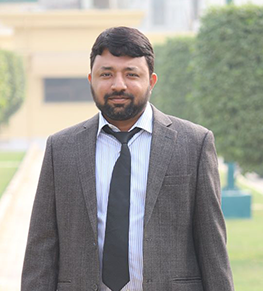
Dr Syed Safi Uddin Qadri
SyMeCo project: “Age-of-Synchronization aware UAV-assisted IoT networks”
Supervisor: Prof Gabriel-Miro Muntean
Host University: Dublin City University (DCU)
Email: syed.safiuddinqadri@dcu.ie
LinkedIn: https://www.linkedin.com/in/syed-safi-uddin-qadri-phd-1a656545/
Dr Syed Safi Uddin Qadri is a SyMeCo postdoctoral fellow with the Performance Engineering Lab at the School of Electronic Engineering and Lero@DCU under the supervision of Prof Gabriel-Miro Muntean.
Safi received his B.E. and M.E. in Telecommunication Engineering in 2012 and 2014, respectively, from Hamdard University, Karachi, Pakistan. He earned his Ph.D. in Electronic Engineering in 2023 from KIET University, Karachi, Pakistan. Safi served as a Lab Engineer at Hamdard University from 2012 to 2014 and then as a Lecturer from 2014 to 2015. He was a Lecturer at KIET University from 2015 to 2016 and was promoted to Assistant Professor, a position he held from 2016 to 2024. During the last six months of his tenure, he served as the Head of the Electrical Engineering Department at KIET University. Safi’s current research interests include Unmanned Aerial Vehicles (UAV), Internet of Things (IoT) Networks, and Adaptive Filtering.
Safi’s SyMeCo research project, titled “Age-of-Synchronization aware UAV-assisted IoT networks” aims to design and implement advanced algorithms to optimise UAV-assisted IoT networks to address the freshness of information issue. Efforts include developing the Clustering (CST) Algorithm and Joint Trajectory and Scheduling Optimization (JTSC) Algorithm to enhance UAV trajectory and scheduling in clustered networks, along with the JTSCM Algorithm to improve coverage, scalability, and reliability in multi-UAV systems. Extensive simulations will be conducted to validate the algorithms’ performance in terms of AoS, energy efficiency, latency, and communication reliability, comparing them to state-of-the-art methods to highlight any improvements.
Project impact – the project is poised to deliver significant societal, economic, and technological impacts. In societal terms, the technology could revolutionise traffic monitoring systems, potentially reducing congestion, improving air quality, and increasing fuel efficiency. Furthermore, its application in natural disaster monitoring could expedite the identification of disaster locations and movements, enabling effective early warning systems that could save lives and mitigate property damage. The project also promises substantial benefits to remote and rural healthcare by facilitating the swift delivery of medical supplies. In the agricultural sector, UAVs could monitor crop conditions, soil moisture, water quality, and pesticide use, enhancing food security and agricultural efficiency. Economically, the initiative could spur job creation and foster new businesses in the UAV, IoT, and telecommunications sectors through the design and development of innovative hardware and software solutions. This would likely attract increased investment in these technologies, further stimulating economic growth. Technologically, the project aims to advance the state of the art in these sectors, with potential applications extending to smart cities and autonomous vehicles, thereby broadening the scope and utility of UAV and IoT integrations. Overall, this project represents a transformative convergence of technology and practical application with far-reaching consequences.
